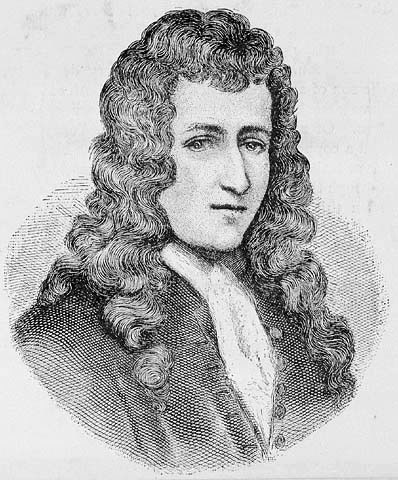 Jacques Cartier
Jacques CartierJacques Cartier (December 31, 1491 – September 1, 1557) was a French explorer who claimed what is now Canada for France.He was the first European to describe and map the Gulf of Saint Lawrence and the shores of the Saint Lawrence River, which he named "The Country of Canadas", after the Iroquois names for the two big settlements he saw at Stadacona (Quebec City) and at Hochelaga (Montreal Island).

Samuel de Champlain
Samuel de Champlain (b. c. 1580[2] – d. December 25, 1635) ( IPA: [samɥɛl də ʃɑ̃plɛ̃] ), "The Father of New France", was a French navigator, cartographer, draughtsman, soldier, explorer, geographer, ethnologist, diplomat and chronicler. He founded Quebec City on July 3, 1608, and served as its administrator for the rest of his life.
Born into a family of master mariners, Champlain, while still a young man, began exploring North America in 1603 under the guidance of François Gravé Du Pont.[3][4] Five years later, after participating in the exploration and settlement of Acadia between 1604 and 1607, Champlain established in 1608 the French settlement that has since grown to become Quebec City.[5] And Champlain became the first European to explore and describe the Great Lakes, making journeys after which he published maps and accounts of what he saw or learnt from the natives, or from the French interpreters living among the natives. He developed early relationships between French settlers, or French interpreters, and natives: first, with local Montagnais Innu and later with others further west (Ottawa River, Lake Nipissing, or Georgian Bay), with Algonquin and with Huron Wendat, who all convinced him to provide assistance in their wars against the Iroquois.
 Louis Joliet
Louis JolietOn May 17, 1673, Jolliet and Marquette departed from St. Ignace with two canoes and five other voyageurs of French-Indian ancestry (today's Métis). They followed Lake Michigan to the Bay of Green Bay, then up the Fox River, nearly to its headwaters. From there, they portaged their canoes a distance of slightly less than two miles through marsh and oak plains to the Wisconsin River. At that point Europeans eventually built a trading post, Portage, named for its location. From there, they ventured on and entered the Mississippi River near present-day Prairie du Chien on June 17.
The Jolliet-Marquette expedition traveled down the Mississippi to within 435 miles (700 km) of the Gulf of Mexico, but turned back at the mouth of the Arkansas River. By this point, they had encountered natives' carrying European goods, and they feared an encounter with explorers or colonists from Spain.[2] They followed the Mississippi back to the mouth of the Illinois River, which they learned from local natives was a shorter route back to the Great Lakes. Following the Illinois and Des Plaines rivers, they reached Lake Michigan near the location of modern-day Chicago. Marquette stopped at the mission of St. Francis Xavier in Green Bay in September, while Jolliet returned to Quebec to relate the news of their discoveries.
René Robert Cavelier, Sieur de La Salle, or Robert de LaSalle (November 21, 1643 – March 19, 1687) was a French explorer. He explored the Great Lakes region of the United States and Canada, the Mississippi River, and the Gulf of Mexico. La Salle claimed the entire Mississippi River basin for France.

Jacques Marquette
Father Jacques Marquette, S.J., (June 1, 1637 – May 18, 1675),[1] sometimes known as Pere Marquette, was a French Jesuit missionary who founded Michigan's first European settlement, Sault Ste. Marie, and later founded St. Ignace, Michigan. In 1673 Father Marquette and Louis Jolliet were the first non-Native Americans to see and map the northern portion of the Mississippi River.

No comments:
Post a Comment